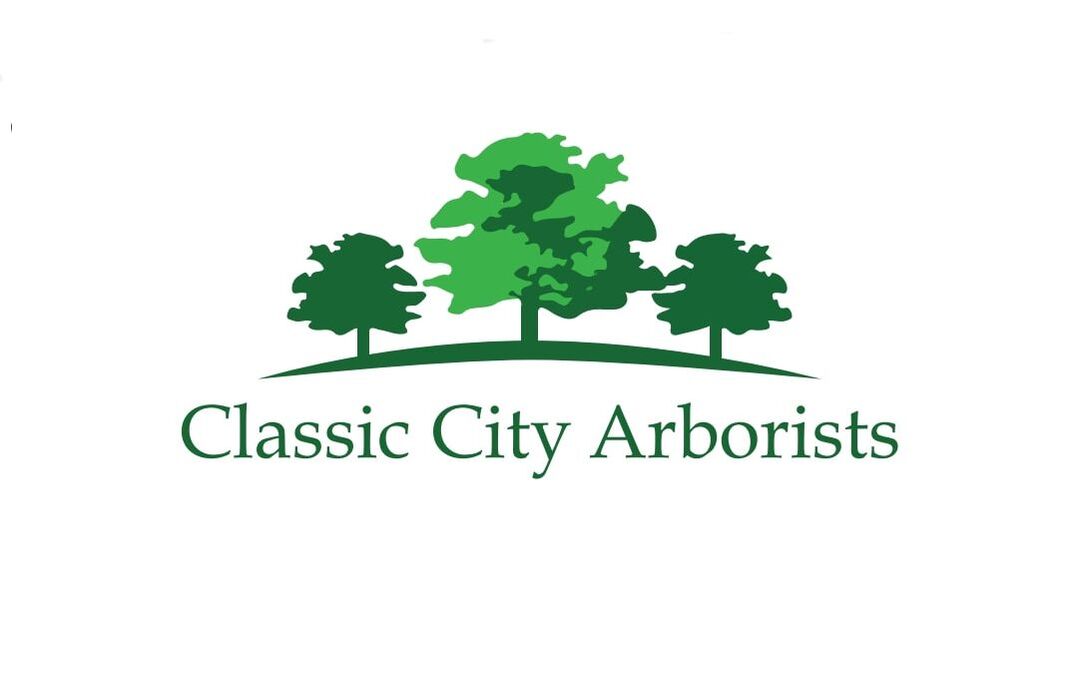|
News and Blog Articles
|
|
With summer right around the corner, bringing warm sunshine and fun hours spent outdoors, we’ve decided to feature the Nellie R. Stevens holly for May’s Tree of the Month. These broadleaf hollies are often thought of as winter fixtures; their tall, conical shape is highly reminiscent of Christmas trees, and their branches, which grow ruby-red berries in the colder months, make great decorations for the Christmas season. Their dark green leaves also attractively contrast the white of newly-fallen snow. So why are we showcasing the Nellie R. Stevens Holly in the summer? Well, these lovely evergreens actually offer vibrant colors year-round. In the spring, small white flowers bloom across the entire tree, giving off a light, gentle scent and beautifully standing out against their leafy background; the dark green, spiny leaves all but sparkle in the sunlight, only further solidifying the tree’s appearance. Beyond their stunning curb appeal, these hollies offer a variety of benefits when planted in your yard. They grow incredibly wide and tall, easily blocking out the sun from reaching your patio and offering that much-needed shade from the blaze so you can enjoy your sweet tea in peace. When planted in rows, these hollies make perfect privacy screens. With just a few feet between each tree, their branches will quickly grow wide enough to intertwine with each other, creating a barrier between your property and the prying eyes and unwanted noises of the rest of the world. This “living wall” provides some separation and turns your backyard into a quiet, serene oasis where you can enjoy the longer summer days with your friends and family. Nellie R. Stevens Holly 101 Taxonomically classified as Ilex x, the Nellie R. Stevens holly is commonly referred to without the middle initial (just Nellie Stevens holly). They grow quickly in comparison to other native trees in Georgia, adding a solid 2 to 3 feet in height when young. Typically, matured Nellie Stevens will reach widths of around 15 feet and heights of up to 30 feet when left to their own devices; this height is stunted somewhat when multiple hollies are planted close to each other to form a privacy screen, where they will usually top out at between 20 and 25 feet high. Did You Know?The Nellie R. Stevens Holly gets its name from a woman named Nellie Robinson Stevens, who grew the original hybrid plant in her home garden by happenstance after sneaking a few pollinated berries from the U.S. Botanic Garden in Washington, D.C. Bees had cross-pollinated the berries in a chance inter-specific cross between the Chinese holly and English holly, creating an entirely new and unique species. While they make great towering trees, these broad-leaf hollies can also be grown as shrubs, cut lower to the ground and allowed to grow wide instead of tall. Both patterns, shorter and fatter or taller and thinner, make great “living” hedges. Whichever you choose, be sure to plant them at least 5 feet apart, so they have enough room to grow outward! In addition to its quick growth rate, the Nellie Stevens is a pretty low-maintenance plant that has been said to “thrive on neglect.” Though it prefers more acidic soil, it can tolerate basic soil types and varying nutrient levels. They do well in full sun, a helpful feature for Georgia’s long summer days, but are also satisfied in partial shade. For their first 6 months, they’ll need some water about once a week, but once they’ve matured, you’ll only need to water them if there’s an extended dry spell. They can handle brief stints of extreme temperatures, making them ideal for the Peach State, where we are at risk for a “Snowpocalypse” in April and record-high temperatures over 100 degrees in August. Georgia is also at risk for inclement weather with heavy rains and high winds. Thanks to their wider base and solid root system, Nellie Stevens are more structurally stable than their taller, skinnier counterparts, making them a great windbreak for your property and less likely to uproot and cause damage or personal injury. Without pruning and maintenance, these trees will mostly maintain their attractive, conical shape. If desired, the lower branches can be pruned back to expose the trunk, giving them that more stereotypical “tree” shape. They are also resistant to pests and pest damage, including deer, making them especially suited for the Athens and Watkinsville areas, where white-tailed deer are an adorable menace to our plant friends. The only pests to look out for on your Nellie Stevens are spider mites, scale, and whitefly, as well as a rare but highly-specialized leaf miner that feeds specifically on hollies. To learn how to keep your eye out for pest and other damage, read our 5 Simple Signs To Identify If Your Tree Is In Decline article. Did You Know?While the Nellie Stevens holly is always female, it has a selectively bred male counterpart, which allows for successful pollination and therefore the continuation of the species. These male Nellie Stevens hollies are referred to as Edward J. Stevens hollies, named after Mrs. Nellie R. Stevens’ father. Edward Stevens hollies grow more purplish leaves than Nellies, and only reach heights of about 25 feet. The Nellie Stevens Holly has dark green leaves averaging around 2.5 inches in length, with 2 or 3 spines on each side. This foliage stays vibrant all year round, unlike other hedge tree species that can grow brown in drought or over-exposure to the sun. In the spring, the branches are be-speckled with small flowers that highly contrast the shining leaves; they are usually a soft white in color, though sometimes can appear greenish thanks to their green center, and give off a faint, gentle scent. In the colder winter months, these hollies will start producing their bright red berries. The fruit attracts birds and other small wildlife, providing vital food when other plants lay dormant in the cold. They are roughly equivalent in size to that of a pea, and are a large part of why these trees are viewed as winter trees; branches adorned with berry clusters are often clipped and used as Christmas decorations, and sometimes mistaken for mistletoe. All Nellie Stevens hollies are female hybrid plants, which means that they are an exclusively female species. They are considered partially parthenocarpic, which means they can produce their red, round berries without the assistance of a male counterpart (though that fruit is seedless and therefore barren). With no males to speak of, that means you can enjoy the flowers and berries without any sneeze-inducing pollen to irritate your sinuses! If you are looking for a low maintenance privacy barrier that will increase your curb appeal (while reducing the nasty yellow pollen around your yard), then take a second look at the beautiful Nellie R. Stevens Holly! AuthorEmily Casuccio is sister and sister-in-law to Rebekah and Scott Rushing, and has over half a decade of experience in copywriting, copyediting, proofreading, and developmental storyboarding. She's worked with both published and undiscovered authors on both fiction and nonfiction, and takes pride in supporting local businesses. Her passion lies in the written word and helping authors of all capacities realize their dreams and achieve their fullest potential. To learn more about her, read samples of her work, or contact her, visit her online portfolio.
9 Comments
Hello
Reply
6/21/2021 06:22:11 am
Brian,
Reply
Belinda
1/18/2022 06:39:08 pm
When is the planting season for the Nellie? I have 40 saplings, but I can't find any information on WHEN to plant them. I usually plant arborvitae and this will be my first time mass planting a different species of tree to support the evergreen privacy fence. It has a drip system. I live in 6A/5B zone. Now is when I'd plant the arborvitae, then turn on the drip system in late May/June. As my property is a watershed, watering for most of the year isn't really necessary for them, but I do give them a little in July/August via the drip system. Thank you for your help in advance.
Reply
1/19/2022 07:01:20 am
Belinda,
Reply
Belinda Tousson
1/19/2022 01:15:07 pm
Thank you for this help. Based on this information, I should plant them late March here in Missouri. We get frost/freeze snaps in December, then snow and freezing temps, more on than off, till mid-March. Being a watershed, my surface ground freezes to about 2 foot down (frost line). The small fish pond I'm digging has to go down a min to 4ft so the fish won't die, plus it needs a defroster in the winter for just in case the weather goes haywire and really freezes over in a blizzard. So the new growth would be demolished if I plant earlier than late March, then. I am very thankful you keep up with your website comments. So many others don't. YOU are appreciated! Stay safe and healthy in these trying times.
Clinton Weiss
7/26/2022 04:20:45 am
Hello! Thanks for sharing the information! I am wondering if you can provide any additional information regarding the root ball of a mature Nellie…how far past the canopy does it extend, if any. What is the depth of the roots? Thanks!
Reply
7/26/2022 06:09:04 am
Clinton,
Reply
Cindi Herin
10/15/2023 04:21:39 pm
I need to move a five foot Nellie Steven’s or cut it down. My soil is hard clay but when I planted it I did amend the soil with sand and compost. How deep do you think the tap root would be? It’s about 3 feet wide and five feet tall?
Reply
10/19/2023 07:02:12 am
Cindi,
Reply
Your comment will be posted after it is approved.
Leave a Reply. |
Categories
All
Archives
January 2023
|
|
23 Whatever you do, work at it with all your heart, as working for the Lord, not for human masters,
24 since you know that you will receive an inheritance from the Lord as a reward. It is the Lord Christ you are serving.
Colossians 3:23-24
24 since you know that you will receive an inheritance from the Lord as a reward. It is the Lord Christ you are serving.
Colossians 3:23-24

